How to Take Care of Hair Loss in Pregnancy?
As an expectant mother, many changes take place in your body. One of these changes is sudden hair loss (alopecia). It affects some women but may not affect others at all. Although it is more common to experience hair loss after having a baby, it also occurs during pregnancy.
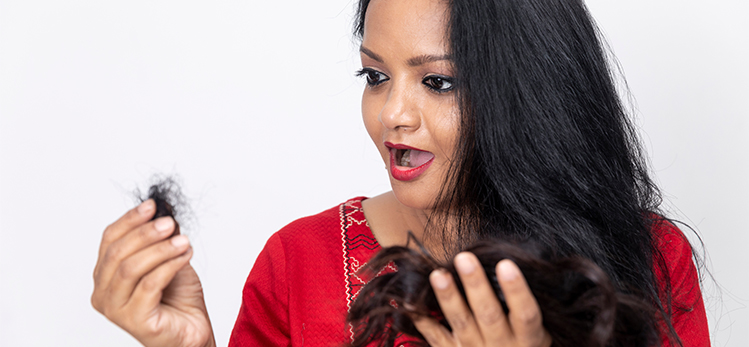
The most likely cause of hair fall during pregnancy is a drop in estrogen levels. (1). Whether you suffer from hair loss during or after pregnancy, you should not be too concerned. It is only a temporary condition, and your hair will eventually grow back.
Common Causes of Hair Fall in Pregnancy
Losing hair is a natural process for both men and women, and an average of 50 to 100 follicles are lost per day. However, during pregnancy, it can occur more frequently, although women are not always affected. Here are the main reasons:
Hormonal Imbalance
It sometimes happens that your hair may begin to fall out and thin due to stress or shock. We call this condition “telogen effluvium.” A small number of women experience this type of hair loss during pregnancy.
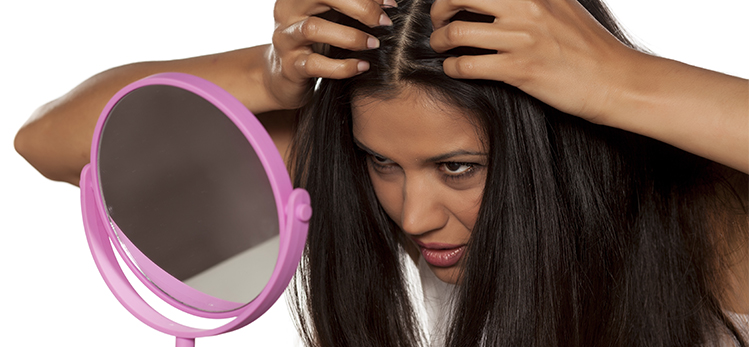
But the primary reason for hair fall during pregnancy during the first trimester is a hormonal imbalance to support the baby growing within. What happens here is that the stress puts your hair follicles into a state of rest. So, if you normally lose 100 hairs a day, you now might lose 300.
This process may not occur immediately, but as we mentioned above, fortunately, the hair loss is not permanent.
Health Issues
When you are pregnant, you may experience a variety of health issues. The imbalance in hormones and vitamins can play havoc with your body. The following health issues can also result in dramatic hair loss:
Thyroid-Related Issues
Even if you have no previous history, you can develop hypothyroidism or hyperthyroidism. Out of the two, hypothyroidism (thyroid hormone deficiency) is more likely to occur, and the typical fallout of this condition is excessive hair loss.
Iron deficiency
The primary cause of iron deficiency is a shortage of blood cells. However, hair loss can also occur with other symptoms like fatigue, breathlessness, irregular heartbeat, and headache. Iron deficiency can be rectified with iron supplements.
Other Causes
Genetic factors and autoimmune conditions, or other underlying health issues can cause hair loss that may or may not be due to pregnancy. Extreme trauma can also cause hair loss. Here again, pregnancy can cause traumatic conditions to the body
Hair fall during pregnancy can occur due to conditions unrelated to pregnancy, like the reasons we mentioned above. If you experience alopecia during pregnancy, you first need to identify the reason. Even if it is temporary, there are a few remedies you can try.

How to Measure Hair Loss
The first step in addressing a hair loss issue would be to measure the extent of hair loss. You can then decide whether remedial action is required and how to proceed.
Blood Tests
Hormone levels in the blood like leutinizing hormone, follicular stimulating hormone, prolactin, androstenedione, testosterone are checked.
Total iron-binding capacity (TIBC), serum ferritin, and serum iron levels are checked.
The thyroid is checked.
Screening is done for syphilis.
A complete blood picture is taken.
Physical tests
A scalp biopsy is performed wherein a small section of the scalp is cut and microscopically examined.
A doctor will conduct a “Hair pull” by tugging gently at about 100 strands of hair at a time to count the strands that come loose. You will be considered to have excessive hair loss if more than three strands come out with each tug.
The doctor may also use a handheld device called a “densitometer” to measure your hair condition. The process is called "densitometry," wherein the miniaturization of the hair shafts is examined.
Scales for Measuring Hair Loss
The two scales for measuring hair loss are the Ludwig Scale and the Savin Scale.
Hair Loss Measured on the Ludwig Scale
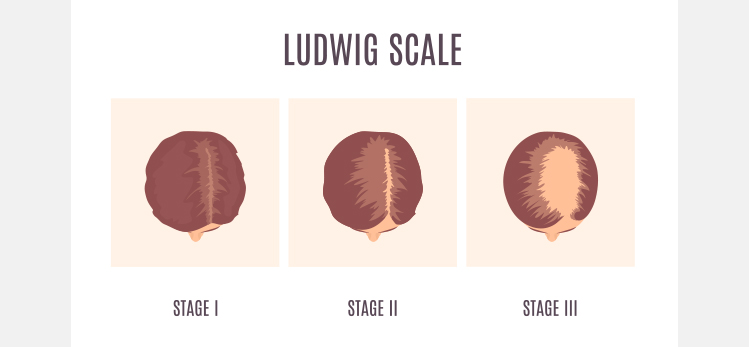
The Ludwig Scale was created by E Ludwig in 1977. Ludwig clearly defines female pattern hair loss (FPHL) and classifies it into three grades of severity that we call Ludwig grades I, II, and III as seen in the above images.
While the Ludwig Scale measures hair density, the Savin Scale also measures the level of thinning on the scalp.
Hair Loss Measured on the Savin Scale
Overall thinning of the crown scalp is measured by the Savin scale as illustrated in the images above. It consists of 8 crown density images illustrating the progression from no hair loss to severe hair loss (Stages I-1, I-2, I-3, I-4, II-1, II-2, III, advanced).
Measurements are taken from different angles of the scalp, and images are recorded. The doctor will recommend a line of treatment based on the results displayed.
Post-partum Hair Loss
Pregnancy-related hair loss commonly occurs in the post-partum stage. We discussed the various aspects of hair fall during pregnancy. But after having a baby, hair loss is quite common and temporary.
You can expect to experience a certain degree of hair loss after having your baby. It may occur about three months after delivery. The most likely cause of hair loss would be vitamin or mineral deficiency. That is why you will be advised to follow a balanced diet.
At this stage, up to 60% of your growing hair may enter into a period of rest (telogen resting state). This hair loss may peak at three to four months after delivery. Your hair may start to revive itself within six to twelve months
How to Deal with Hair Loss in Pregnancy
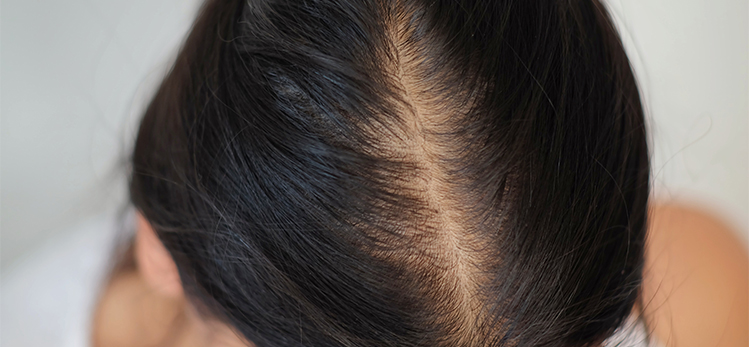
Follow a healthy and balanced diet fortified with sufficient protein, minerals, and iron. It will go a long way to combat hair loss. Please consult your treating doctor(obstretician or dermatologist) for further guidance..
There are also physical factors that you should consider, like the way you style your hair (avoid tight braids, ponytails, or buns). You should also steer clear of frequent washing and brushing. Instead, be gentle on your hair while brushing it and use a wide-toothed comb.
Last but not least, do not use hot rollers, curling irons, hair straighteners, and other similar devices for some time before and after having your baby.
Hair fall during pregnancy is common and nothing to get alarmed about. The important thing to do is to be aware and take adequate precautions to reduce hair loss . If it does occur, now you know how to deal with it.
If you experience some hair fall, especially after having your baby, do not despair. Instead, enjoy bonding with your newest family member, and before you know it, with a little tender, loving care, your beautiful tresses will be back to their former glory!
Please consult your treating doctor (obstretician or dermatologist) for further guidance.
Myth Busters HairFall
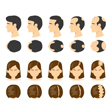
Androgenetic Alopecia - Everything You Need To Know
Have you been experiencing excessive hair fall over a prolonged period of time? It could be an early sign of androgenetic alopecia. It is a hair loss disorder common in both genders and can lead to progressive thinning and even baldness in some patients if not caught and treated early.

How To Make Hair Grow Faster For Men
A head full of healthy hair is a matter of confidence. Hair has its own mechanism of growing and shedding, and it is when this mechanism is thrown off that growth is hindered. Especially in the case of males, hair growth faces a lot of hiccups that can easily be managed.
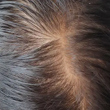
Female Pattern Baldness - Causes & Treatments
Have you suddenly noticed an increase in the number of hair strands on your pillow in the morning? Or is your ponytail getting thinner by day? Well, you might be suffering from female pattern baldness. While that does sound scary, identifying it early on is key to treating this condition effectively. So keep reading to know what this is, how you can identify it, and most importantly, what treatments you can avail of to get your beautiful lustrous hair back.
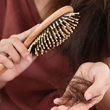
What Are The Reasons For Hairfall?
Almost everyone experiences some amount of hair thinning over the years. Shedding around 50 to 100 single strands of hair per day is considered normal. However, losing more than 150 strands a day, experiencing sudden thinning, or developing circular bald patches on your scalp are reasons for concern. Hair loss occurs when new hair doesn’t grow fast enough to replace the amount of hair you lose daily. Hair can fall due to various reasons, with hereditary hair loss and poor nutrition being the most common hair fall reasons.

Expert Approved Tips For Hair Growth
What can be more debilitating than seeing hundreds of hair strands shedding from your scalp every time you brush your hair? Also, excessive molting occurs during seasonal changes that can be very stressful for you. Although it’s okay to lose between 50-100 strands every day, according to the American Academy of Dermatology, the problem occurs when you start shedding more than normal. But that doesn’t mean you have to feel helpless as there are ways to grow your hair back. Even if you are coping with baldness or alopecia, certain hair growth tips from dermatologists can come to your rescue. Read on to discover how these tips can be your savior when abnormal hair fall problems are in sight.
Trending Videos
+ 6 Sources
LMRC - GGI-CO-A2-DMA-300026127-300026127-WM-J21-282
© 2021 Dr. Reddy’s Laboratories Ltd. All rights reserved.